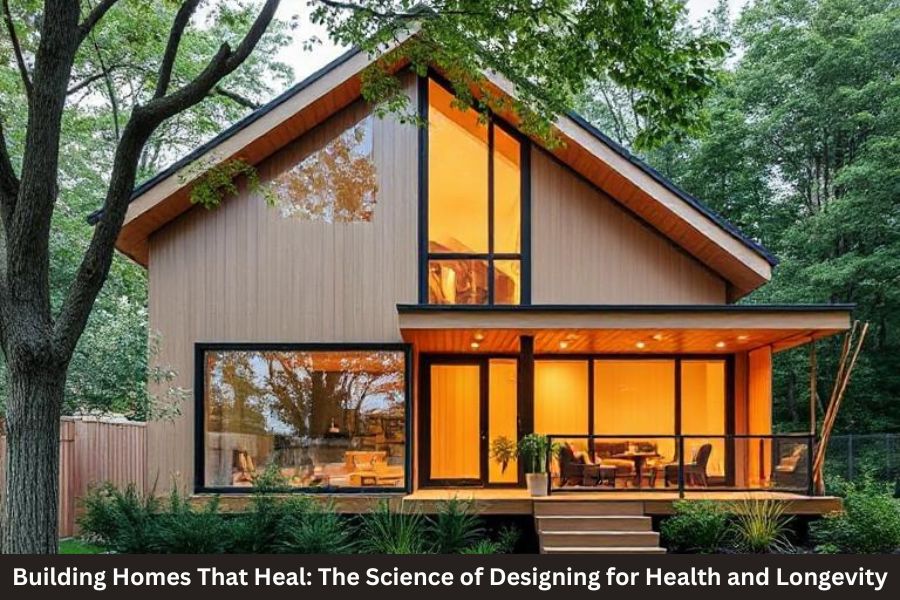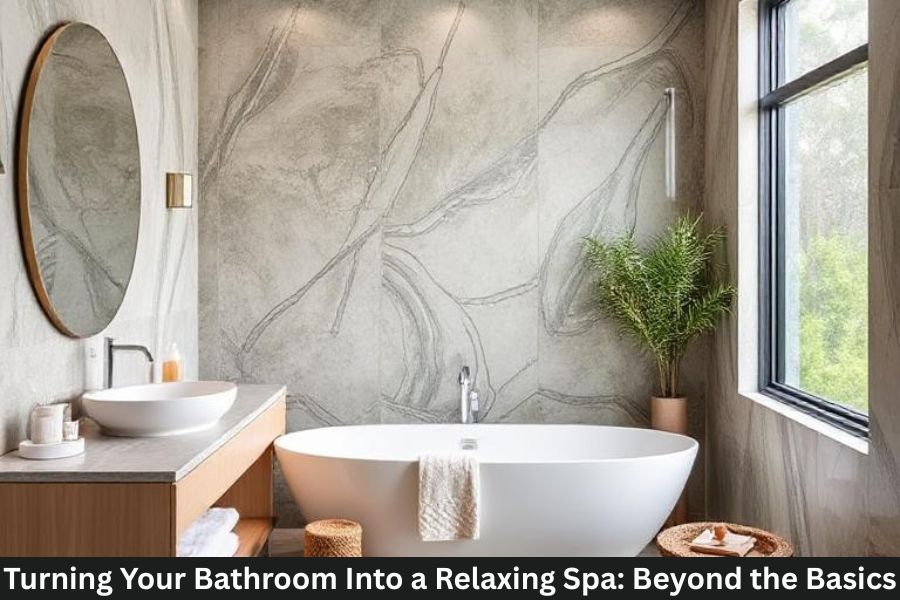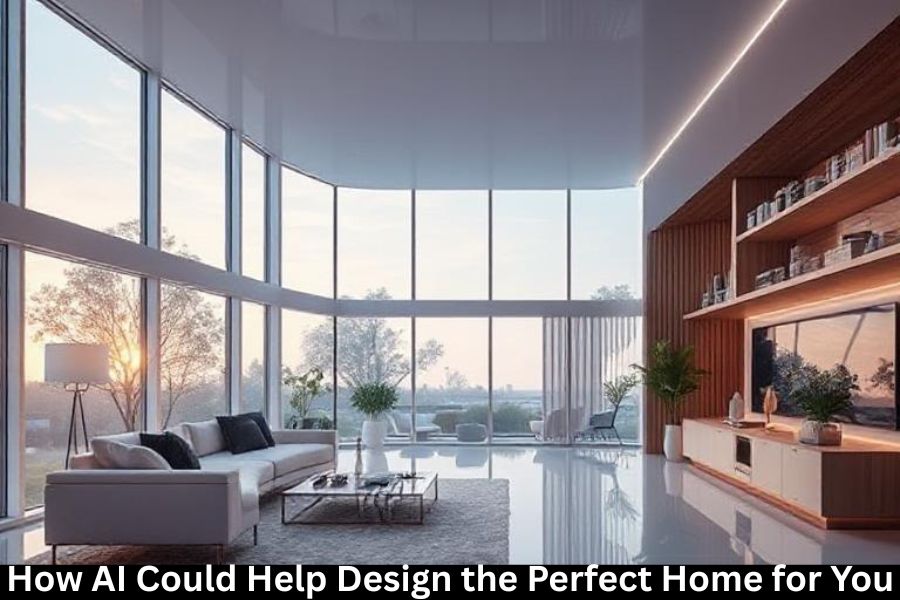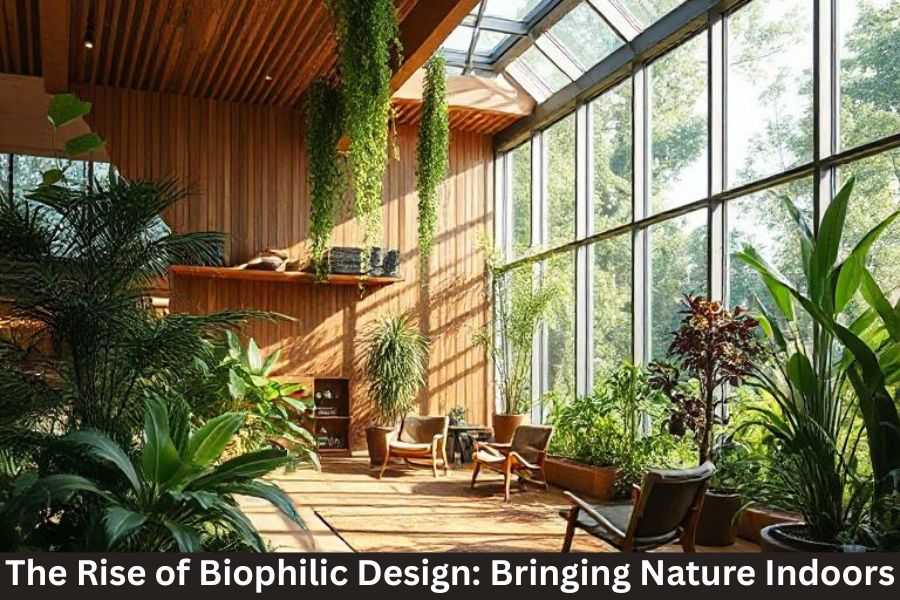Imagine living in a home that not only shelters you but actively improves your health, soothes your mind, and increases your lifespan. Healing homes—once the domain of luxury retreats and futuristic concepts—are fast becoming a reality for everyday living.
This article explores the science of designing for health and longevity, offering evidence-backed insights on how your home can become a foundation for lifelong wellness.
Why the Home Matters for Health
We spend over 90% of our lives indoors, and for many, the home is the single most frequented environment. That means poor design choices can compound stress, illness, and discomfort—while good design can prevent disease, foster emotional stability, and extend lifespan.
The Emerging Field of Wellness Architecture
Wellness architecture is a growing field that blends neuroscience, environmental psychology, and sustainable design. Its goal? To create homes that heal the body, calm the mind, and uplift the spirit. Think of it as architecture that’s backed by a medical degree.
Key Scientific Principles Behind Healing Homes
Designing for health isn’t about trends—it’s about biological harmony. Key principles include:
- Optimizing air, light, and water
- Reducing environmental stressors
- Encouraging movement
- Fostering emotional connection and comfort
These all play a direct role in regulating hormones, immune function, and mental well-being.
Indoor Air Quality and Its Impact on Longevity
Clean air is non-negotiable. Poor ventilation can lead to respiratory issues, fatigue, and chronic illness. Healing homes use:
- HEPA filtration
- Non-toxic paints and finishes
- Indoor plants that purify air
- Cross-ventilation for fresh airflow
The result? Better lung health, better sleep, and longer life expectancy.
Natural Light and Circadian Health
Exposure to natural light syncs our circadian rhythm, which governs sleep, metabolism, and immune response. Design tips:
- Use south-facing windows
- Maximize glass exposure
- Add skylights in darker rooms
- Use dim-to-warm lighting to mimic sunset
This approach enhances melatonin production and reduces risks of depression and even cardiovascular disease.
The Role of Materials: Toxins vs. Wellness
Many building materials off-gas VOCs (volatile organic compounds) that are linked to cancer and respiratory conditions. Healing homes prioritize:
- Low-VOC paints and sealants
- Natural wood and stone
- Organic cotton or wool fabrics
- Eco-certified construction materials
Every material choice is a vote for your health.
Designing for Movement and Posture
A sedentary environment leads to:
- Muscle atrophy
- Poor circulation
- Mental fog
Homes designed for movement include:
- Standing workstations
- Open floor layouts
- Stairs that encourage use
- In-home yoga or fitness zones
The layout encourages micro-movements, improving physical health without a gym.
Biophilic Elements and Stress Reduction
From leafy plants to water features, biophilic design reduces cortisol and promotes mental recovery. Studies show even views of nature improve mood and cognition.
Incorporate:
- Indoor gardens
- Natural textures (bamboo, cork)
- Earth-tone color palettes
- Nature-inspired artwork
Acoustic Comfort and Mental Clarity
Noise pollution isn’t just annoying—it affects your nervous system. Healing homes use:
- Acoustic insulation
- White noise water features
- Soft furnishings to absorb sound
The result is greater focus, better sleep, and lower anxiety.
The Power of Color Psychology
Colors trigger hormonal responses:
- Blues = calm
- Greens = renewal
- Yellows = energy
- Warm neutrals = safety
Use color schemes that align with the intended function of the space (e.g., cool tones in bedrooms, energizing tones in kitchens).
Emotional Safety in Spatial Layouts
Layout influences how safe and empowered we feel in our space:
- Avoid tight, cluttered zones
- Ensure privacy in sleeping and bathing areas
- Design social areas with circular seating for connection
- Use curved architecture for softness and comfort
Smart Technology and Health Monitoring
Technology can enhance healing when thoughtfully integrated:
- Air quality sensors
- Circadian lighting systems
- Water filtration alerts
- Temperature and humidity control
- Fall detection for elderly residents
Smart homes can become active partners in our health journey.
Homes for Aging in Place
Longevity means preparing for all life stages, including elder years:
- Barrier-free showers
- Wider doorways for wheelchairs
- Lever-style handles for arthritic hands
- Slip-resistant flooring
- Smart alerts for medication or movement tracking
Design should adapt as your body does.
Cultural and Spiritual Design Influences
Healing looks different across cultures:
- Feng Shui in Chinese tradition
- Vastu Shastra in Indian homes
- Scandinavian Hygge prioritizing coziness and comfort
- Japanese Wabi-Sabi embracing imperfection and nature
Blending cultural philosophy adds depth and meaning to healing design.
Case Studies: Homes That Heal
- Delos’ WELL Living Lab (USA): A research hub optimizing indoor environments for human performance.
- Bosco Verticale (Milan): Skyscrapers covered in trees for air and mental health.
- The Green House Project (Elder care): Small homes designed around wellness for aging adults.
Getting Started: Healing Design Tips
- Swap out synthetic rugs for natural fiber ones
- Install water filters on taps
- Add snake plants or peace lilies to every room
- Upgrade to non-toxic bedding
- Introduce natural light and airflow
- Use essential oil diffusers for calming scents
Challenges and Trade-Offs
- Cost: Natural and toxin-free materials can be expensive
- Retrofit limitations in old buildings
- Over-designing with gadgets can feel clinical
Balance aesthetics, comfort, and practicality.
Conclusion
Your home should be more than a place you live—it should be a place that keeps you alive and thriving.
By embracing the science of designing for health and longevity, we can build environments that not only support our well-being today but extend and enhance our quality of life for decades to come.
Because when the home heals, everything else follows.
FAQs
Q1: What’s the first step toward creating a healing home?
Start by improving air and light quality—two of the most impactful changes you can make right away.
Q2: Are there certifications for health-focused homes?
Yes! Look into WELL Building Standard, Fitwel, or LEED for Homes.
Q3: Do smart homes really help with health?
When used mindfully—yes. Smart tech can optimize indoor conditions and monitor wellness data.
Q4: Can healing home design help with anxiety?
Absolutely. Design that incorporates biophilic elements, noise control, and safe layouts has been shown to lower stress hormones.
Q5: Is this approach only for homeowners?
Not at all. Renters can implement many changes, from portable air purifiers to non-toxic fabrics and lighting.



